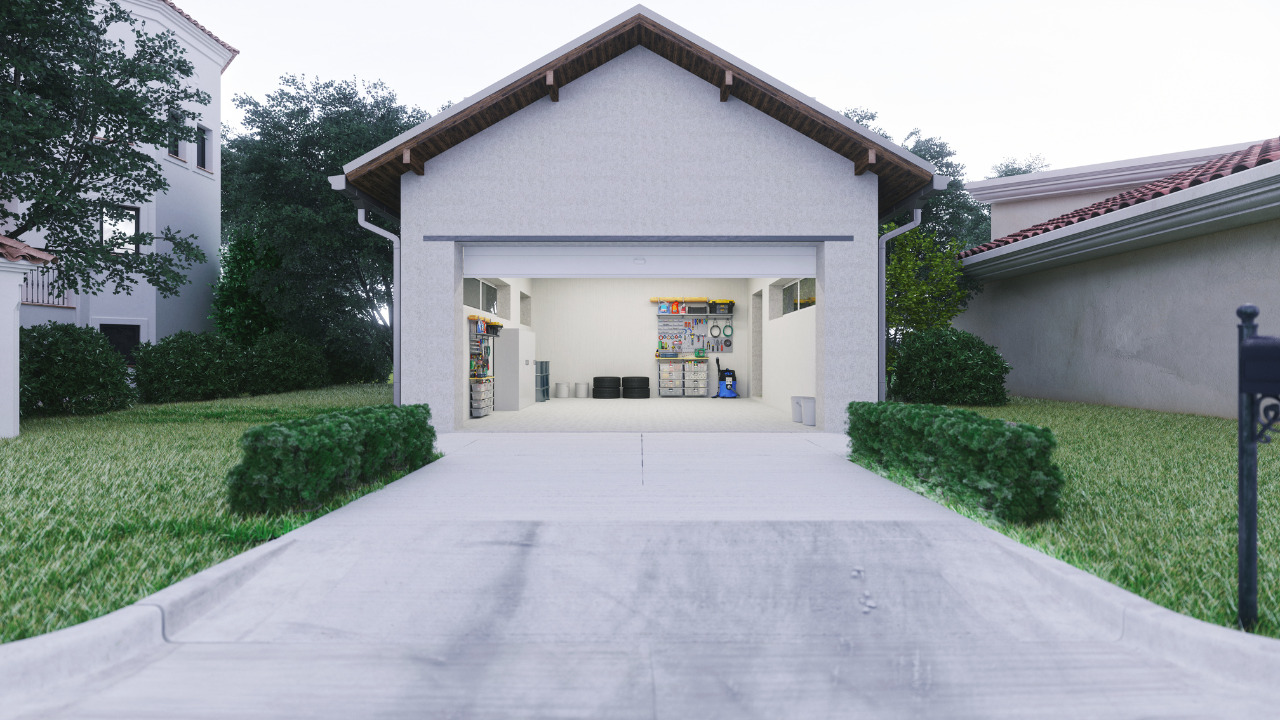Choosing the right driveway material is one of those home decisions that quietly shapes curb appeal, maintenance costs, and long-term value for decades. For Oklahoma homeowners — facing hot summers, occasional freezes, and a mix of urban and rural properties — the choice usually comes down to asphalt or concrete. Both have real advantages and trade-offs. Below I break them down clearly so you can match material to budget, climate, and lifestyle.
Table of Contents
Climate matters: Oklahoma’s weather and how it affects pavements
Oklahoma’s climate swings between hot, sometimes very humid summers and cold snaps in winter. That temperature range, plus occasional heavy rains and freeze-thaw cycles, directly affects how paving materials perform:
- Asphalt softens in extreme heat and may rut under heavy loads if not properly mixed or compacted.
- Concrete resists softening but can crack if expansion and contraction aren’t properly managed (control joints, reinforcement, proper subbase).
- Freeze-thaw cycles stress both materials, but asphalt’s flexibility often helps it tolerate freeze–thaw movement better than rigid concrete slabs.
So, climate isn’t the only factor — installation quality and subgrade preparation are just as important — but Oklahoma’s weather makes certain maintenance practices and design details essential for long-term performance.
Cost comparison (including a practical new driveway price breakdown)
Upfront cost is often the first consideration. Generally:
- Asphalt has a lower initial installation cost per square foot than concrete. It’s commonly chosen for budget-conscious projects and for larger driveways where cost scales quickly.
- Concrete typically costs more up front but can last longer with less frequent large-scale maintenance.
To make decisions easier, homeowners sometimes request a new driveway price breakdown that separates materials, labor, base preparation, drainage adjustments, and finishing. That breakdown reveals where money is spent: poor subgrade preparation or inadequate drainage will shorten the life of either material and create unexpected costs later. Over a 20–30 year horizon, it’s important to look at lifecycle costs (initial install + routine maintenance + likely repairs) rather than just the sticker price today.
Durability and expected lifespan
Typical lifespans, assuming proper installation and routine maintenance:
- Asphalt: 15–20 years on average. Regular sealcoating and timely crack repairs can extend life. Resurfacing overlays are also a cost-effective way to renew an asphalt driveway.
- Concrete: 25–30 years or more when well installed. Individual slabs can last a long time, but repairs (patching, slab replacement) are more expensive and visually noticeable.
Which lasts longer often depends on installation quality and base/subgrade work rather than the material itself. Heavy truck traffic, poor drainage, or tree roots can cut life expectancy dramatically for either option.
Maintenance: what homeowners should plan for
Maintenance patterns are different and influence homeowner effort and expense:
- Asphalt maintenance: Sealcoating every 3–5 years helps preserve the surface and slow oxidization. Fill cracks promptly, and consider periodic overlays every 15–20 years depending on wear. Asphalt repairs are generally straightforward and less costly than concrete repairs.
- Concrete maintenance: Concrete requires fewer routine treatments but when problems arise (spalling, large cracks, or settlement), repairs are more expensive. Concrete can be sealed for stain protection and to reduce water intrusion, though sealing is optional.
If you prefer low-touch upkeep, concrete may feel easier — until a big repair is needed. If you’re willing to do periodic, inexpensive maintenance, asphalt can be a practical long-term choice.
Appearance and customization
Driveway aesthetics matter for curb appeal:
- Asphalt offers that classic smooth, dark-black finish that provides contemporary curb appeal and high contrast with landscaping. It’s less customizable beyond edge treatments and aggregate mix.
- Concrete provides more design flexibility: stamping, staining, exposed aggregate, and colored finishes let homeowners match architectural styles or add decorative patterns.
If you want a stamped, colored driveway to match a specific look, concrete is the better canvas. If you want a clean, modern look with strong visual contrast, asphalt is a reliable option.
Environmental and practical considerations
Both materials have environmental trade-offs:
- Asphalt is largely recyclable; old asphalt (millings) can be reused in new pavement. It absorbs more heat (contributing to local heat islands), which could matter in dense neighborhoods.
- Concrete production is energy-intensive and has a higher embodied carbon footprint, but its lighter surface reflects more sunlight, slightly reducing heat absorption.
Other practical points: asphalt installations are typically faster (allowing quicker use), while concrete needs more curing time before heavy use.
Resale value and neighborhood fit
Driveway choice can affect perceived value depending on neighborhood standards:
- In neighborhoods where long-lasting, low-maintenance finishes are prized, a well-executed concrete driveway can be a selling point.
- In areas where cost-effectiveness and quick repairs are the norm, a well-maintained asphalt driveway is acceptable and expected.
Matching the driveway material to the local market and nearby homes often yields the best resale perception.
Pros and cons at a glance
- Asphalt — Pros: Lower upfront cost, easier repairs, faster installation, flexible in freeze-thaw.
- Asphalt — Cons: Requires periodic sealing, shorter average lifespan, absorbs more heat.
- Concrete — Pros: Longer lifespan, high customization, low routine maintenance.
- Concrete — Cons: Higher upfront cost, more expensive repairs, susceptible to cracking without proper base.
Conclusion
There isn’t a single “best” choice for every Oklahoma home. If you prioritize lower upfront cost, quicker installation, and easier repairs — and are willing to perform periodic maintenance — asphalt is a solid choice. If you prefer a longer-lasting surface with more design options and are ready to invest more up front, concrete may be the better fit. In every case, pay close attention to base preparation, drainage design, and installer experience — those factors often matter more than whether the surface is black or gray.





